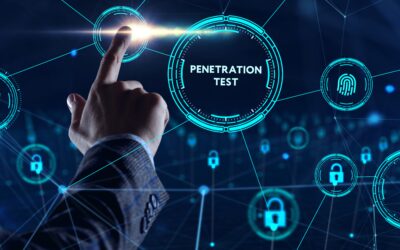Last month, a significant cyber espionage incident involving Chinese state-sponsored hackers came to light. This incident highlights severe vulnerabilities within a major enterprise’s security infrastructure.
All breaches are scary. What makes this one especially concerning is it remained undetected for three years. It was carried out using advanced persistent threat (APT) tactics. Attackers exploited critical vulnerabilities in F5 Big-IP’s load balancer.
Once inside the hackers moved laterally across the network with spear phishing and social engineering. Their techniques allowed them to access and exfiltrate sensitive data, including intellectual property.
This incident underscores the importance of robust risk management and vulnerability patching practices to protect against such sophisticated cyber threats. For further details, you can read the full story here: Researchers Uncover Chinese Hacking Cyberespionage Campaign.
Vulnerability Analysis
The vulnerabilities exploited in this cyber espionage campaign were not new. In fact, they were known and documented vulnerabilities within F5 Big-IP’s load balancer technology. SAINT’s research has cataloged over 350 vulnerabilities in BIG-IP technologies since 2017. These systems have persistent risks associated with them. Bad actors exploited nearly a dozen of these risks over the past four years.
The specific vulnerabilities used in this breach had a critical severity level. Despite being well-known within the cybersecurity community, they remained unpatched in the affected enterprise’s infrastructure.
The implications of such oversight are significant. Failing to address these vulnerabilities promptly exposed the critical infrastructure and sensitive information. This breach emphasizes the importance of continuous monitoring, timely patching, and a proactive approach to vulnerability management to safeguard against cyber threats.
In addition, the attackers’ ability to exploit these vulnerabilities and move laterally across the network underscores the need for robust security configurations and regular audits. These fundamentals of cybersecurity must be in place to protect against APT and other sophisticated cyber attacks.
Business Risk Management Failures
The prolonged nature of this cyber espionage breach reveals critical failures in the enterprise’s risk management program.
Several key areas likely contributed to the breach remaining undetected for three years:
- Asset Management Issues
Effective asset management is fundamental to cybersecurity. It involves keeping an accurate inventory of all hardware and software assets, especially those connected to critical infrastructure. In this incident, no one identified or properly managed the compromised assets, which allowed the attackers to exploit known vulnerabilities. - Critical vs. Legacy Systems
The breached systems were part of the enterprise’s critical infrastructure. However, they contained vulnerabilities that should have been patched or the systems should have been decommissioned if they were no longer essential. This raises questions about whether the organization had a clear distinction between critical and legacy systems and whether legacy systems were appropriately managed or retired. - Vulnerability and Patch Management
A robust vulnerability and patch management program is crucial to defend against cyber threats. Despite the critical severity of the exploited vulnerabilities, they remained unpatched. This oversight indicates a possible lapse in the patch management process. Regular updates and patches are especially necessary for systems handling sensitive information. This is fundamental to protect against known exploits. - Configuration Issues
Proper configuration of systems is another essential element of cybersecurity. Misconfigured systems can provide an easy entry point for attackers. The fact that the attackers moved laterally within the network suggests that the affected systems may not have been configured according to industry best practices. This lapse allowed the unauthorized access and movement. - Role Clarity in Patch Management
Clearly defined roles and responsibilities for patch management are critical. In this case, there may have been a lack of clarity or accountability regarding who was responsible for ensuring that systems were updated and secure. - Administrative Security
Weak administrative security can also be a significant risk factor. If employees used default or easily guessable passwords, attackers would have found gaining and maintaining access fairly easy. Ensuring strong, unique passwords and implementing multi-factor authentication are basic yet vital security measures. - Network Segmentation
With effective network segmentation, cybersecurity teams can better contain breaches and limit the movement of attackers within a network. The ability of these attackers to pivot across the network suggests inadequate segmentation, which allowed them to access additional systems and data once they breached the initial point of entry. - Stakeholder Involvement in Risk Management
For a comprehensive approach to cybersecurity, risk management must involve stakeholders. All relevant parties must understand the risks and their roles in mitigating them. In this incident, it seems there may have been a lack of visibility and involvement from key stakeholders in the risk management process. - Addressing these areas of weakness can help organizations better protect against cyber espionage.
Technical Exploitation vs Root Cause
During breach response, hackers typically focus on the technical exploitation. Understanding these technical exploitation techniques is essential for improving immediate defenses and developing effective incident response strategies.
Although the technical details are very important, focusing only on them ignores the underlying root causes that allowed the breach. Often the root causes are system failures that make the organization vulnerable to attack.
Because of the prolonged presence of critical vulnerabilities, it is likely this enterprise had/has weaknesses in several areas:
- Risk Management
A reactive rather than proactive approach to risk management leaves organizations exposed to known threats. Regular risk assessments and a robust risk management strategy are necessary to identify and mitigate potential vulnerabilities before they can be exploited. - Vulnerability Management
The failure to patch known vulnerabilities in a timely manner indicates a lapse in the vulnerability management process. Regularly updating and patching systems, especially those integral to critical infrastructure, is fundamental to cybersecurity. - Security Culture
A lack of security awareness and training can lead to poor practices, including weak passwords and falling victim to social engineering attacks. In a strong security culture, training all employees to be vigilant about potential threats is key. - Governance and Accountability
In cybersecurity, clearly defined roles and responsibilities for tasks, such as patch management and system configuration, are especially important. This also necessitates having clear policies and procedures in place, along with regular audits to ensure compliance.
To create a more comprehensive and resilient cybersecurity posture, organizations must address the technical exploitation methods and the underlying root causes. This requires dual focus to defend against sophisticated cyber threats and safeguard sensitive information from future cyber espionage activities.
The best way to accomplish this dual focus is to take a risk-based approach to cybersecurity. By adopting a risk-based approach to cybersecurity, organizations can build a more robust and resilient defense against cyber espionage and other advanced threats. This comprehensive strategy helps in preventing breaches and ensures a rapid and effective response if and when incidents occur.





0 Comments